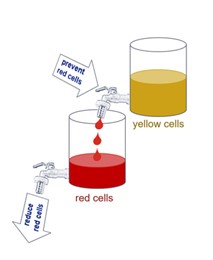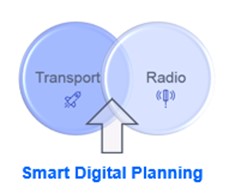The Challenge in Planning: Efficient Capacity management
One of the biggest challenges in microwave network planning is managing capacity to anticipate growing traffic demand and avoid potential congestion. For every new connection or upgrade, it is essential to anticipate capacity needs without impacting service. To achieve this, traffic prediction models and control mechanisms are used to optimize the network topology and prevent bottlenecks.
The Solution: Smart Digital Planning (SDP)

To address these challenges, the Smart Digital Planning (SDP) environment has been developed in Germany, an internally built solution that enables automatic link capacity management and prioritization of network site upgrades. Through AI-based prediction models and real traffic and capacity data, links at risk of saturation are identified in advance, enabling preventive actions and avoiding network blockages.
Thanks to the use of SDP, planning engineers have access to capabilities that help to act with high accuracy, reliability, and speed. Among its jey functionalities are the following:
- Dynamic Prioritization: Upgrade priorities are assigned based on current usage and forecasts for each link, identifying the optimal moment for intervention.
- Congestion Prevention: Anticipates traffic increases to prevent links from reaching critical utilization levels (reducing “Yellow Sites” and “Red Sites”), ensuring smooth traffic flow (“Green Sites”).
- Resource Optimization: Reduces the number of highly utilized links, minimizing the need to create new ones and promoting the reuse of existing links.
- Fiber or Microwave Decision-Making: SDP enables evaluation of whether it is more efficient to deploy fiber or microwave links, considering implementation time and operational efficiency.
The SDP environment also enables an integral planning and a holistic view:
- Visualize the current load of each link, identifying intervention priorities.
- Compare current capacity vs. target capacity, based on service requirements and expected user experience.
- Perform traffic growth predictions using customized forecasting models.
- Include implementation time in the planning process to ensure proactive execution.

It also provides an integrated view across the microwave radio and transport layers, enabling the analysis of dependencies and facilitating root cause identification in the event of potential incidents.
Benefits
The main benefits of using SDP in the microwave network planning process include:
- Enables proactive and efficient deployment of radio links by early identification of critical locations, allowing activation at the optimal time and place before defined capacity or quality thresholds are exceeded.
- Reduces congested nodes (“Red Sites”), ensuring service continuity and maintaining access network availability without blockages.
- Investment optimization, by prioritizing the upgrade of existing links, reducing the need for new deployments, and containing both OPEX and CAPEX.
Tangible results in Germany
The application of SDP has led to measurable impacts:
- Reduction of links with high utilization (>70%) from 2% at the end of 2023 to below 1% by the middle of 2025.
- Transport Red Sites were reduced from >1.5% in 2023 to <0.1%.
- The number of transport Yellow Sites was reduced by more than 60%.
- Decrease of 40% of the need of new links during 40% in 2024/2025.
- Increase of the degree of automation in processes for microwave domain.
With the implementation of SDP, Germany takes another step toward the Level 4 of autonomy in the planification processes of microwave domain. This level of autonomy allows the algorithms to identify, analyze and respond to operational conditions in real time, optimizing network performance, reducing incidents response times and improving the overall operational efficiency. This milestone represents a key step in the transition towards self-managed, resilient networks and prepared for the challenges of the next generation of digital services.






